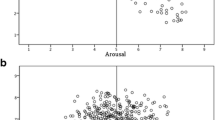Abstract
Purpose
Recent studies have analyzed steady-state visual evoked potentials (SSVEPs) measured on belowthe-hairline areas, such as behind-the-ears (temporal area) and face (frontal area) using different montages of channels and frequency bands. This study aims to investigate how both reference electrode and frequency ranges (low, medium, and high bands) affect the SSVEP measured on hairless areas of temporal and frontal.
Methods
The EEG signals were acquired from 12 individuals, and the elicited SSVEP was evaluated in terms of amplitude and signal-to-noise ratio (SNR).
Results
The best electrode combinations for measuring SSVEP on hairless areas are obtained with Fpz-Tp9 and Fpz-Tp10 (up to 40 Hz); however, for stimuli frequencies higher than 40 Hz, the best result is obtained with the temporal area and with the reference electrode located on the ear.
Conclusion
The SSVEP amplitude and the SNR depend on the combination of the electrode reference and the range of visual stimulus frequency. These findings can aid in the development of more practical and comfortable SSVEP-based BCIs.





Similar content being viewed by others
References
Chen X, Chen Z, Gao S, Gao X. A high-ITR SSVEP-based BCI speller. Brain-Computer Interfaces. 2014;1(3–4):181–91.
Di Russo F, Pitzalis S, Aprile T, Spitoni G, Patria F, Stella A, et al. Spatiotemporal analysis of the cortical sources of the steady-state visual evoked potential. Hum Brain Mapp. 2007;28(4):323–34.
Diez PF, Mut VA, Perona EMA, Leber EL. Asynchronous BCI control using high-frequency SSVEP. J Neuroeng Rehabil. 2011;8(1):39.
Fawcett IP, Barnes GR, Hillebrand A, Singh KD. The temporal frequency tuning of human visual cortex investigated using synthetic aperture magnetometry. NeuroImage. 2004;21(4):1542–53.
Floriano A, Diez FP, Freire Bastos-Filho T. Evaluating the influence of chromatic and luminance stimuli on SSVEPs from behind-the-ears and occipital areas. Sensors. 2018;18(2):615.
Hsu HT, Lee IH, Tsai HT, Chang HC, Shyu KK, Hsu CC, … Lee PL. Evaluate the feasibility of using frontal SSVEP to implement an SSVEP-based BCI in young, elderly and ALS groups. IEEE Trans Neural Syst Rehabil Eng. 2016;24(5):603–615.
Lin FC, Zao JK, Tu KC, Wang Y, Huang YP, Chuang CW, … Jung TP. SNR analysis of high-frequency steady-state visual evoked potentials from the foveal and extrafoveal regions of human retina. Proceedings of the 34th IEEE EMBS Conf.; 2012, 28 Aug-1 Sept; San Diego, USA. IEEE; 2012. pp. 1810–1814.
Müller SMT, Bastos-Filho TF, Sarcinelli-Filho M. Monopolar and bipolar electrode settings for SSVEP-based brain-computer interface. J Med Biol Eng. 2015;35(4):482–91.
Muller-Putz GR, Pfurtscheller G. Control of an electrical prosthesis with an SSVEP-based BCI. IEEE Trans Biomed Eng. 2008;55(1):361–4.
Müller-Putz GR, Eder E, Wriessnegger SC, Pfurtscheller G. Comparison of DFT and lock-in amplifier features and search for optimal electrode positions in SSVEP-based BCI. J Neurosci Methods. 2008;168(1):174–81.
Norton JJ, Lee DS, Lee JW, Lee W, Kwon O, Won P, …, Umunna S. Soft, curved electrode systems capable of integration on the auricle as a persistent brain–computer interface. Proc Natl Acad Sci. 2015;112(13):3920–3925.
Pastor MA, Valencia M, Artieda J, Alegre M, Masdeu JC. Topography of cortical activation differs for fundamental and harmonic frequencies of the steady-state visual-evoked responses. An EEG and PET H215O study. Cereb Cortex. 2007;17(8):1899–905.
Sammer G, Blecker C, Gebhardt H, Kirsch P, Stark R, Vaitl D. Acquisition of typical EEG waveforms during fMRI: SSVEP, LRP, and frontal theta. NeuroImage. 2005;24(4):1012–24.
Srinivasan R, Fornari E, Knyazeva MG, Meuli R, Maeder P. fMRI responses in medial frontal cortex that depend on the temporal frequency of visual input. Exp Brain Res. 2007;180(4):677–91.
Vialatte F-B, Maurice M, Dauwels J, Cichocki A. Steady-state visually evoked potentials: focus on essential paradigms and future perspectives. Prog Neurobiol. 2010;90(4):418–38.
Wang YT, Nakanishi M, Wang Y, Wei CS, Cheng CK, Jung TP. An online brain-computer interface based on SSVEPs measured from non-hair-bearing areas. IEEE Trans Neural Syst Rehabil Eng. 2017;25(1):14–21.
Zhu D, Bieger J, Molina GG, Aarts RM. A survey of stimulation methods used in SSVEP-based BCIS. Comput Intell Neurosci. 2010:1.
Acknowledgments
The authors acknowledge the technical support from the Federal University of Espirito Santo (UFES/Brazil) and the National University of San Juan (Argentina).
Funding
This study was financed in part by the CAPES/Brazil - Finance Code 88887.095636/2015-01.
Author information
Authors and Affiliations
Corresponding author
Ethics declarations
The study was approved by the Ethics Committee of the School of Exact, Physical and Natural Sciences of the National University of San Juan Argentina (act #7).
Additional information
Publisher’s note
Springer Nature remains neutral with regard to jurisdictional claims in published maps and institutional affiliations.
Rights and permissions
About this article
Cite this article
Floriano, A., Carmona, V.L., Diez, P.F. et al. A study of SSVEP from below-the-hairline areas in low-, medium-, and high-frequency ranges. Res. Biomed. Eng. 35, 71–76 (2019). https://doi.org/10.1007/s42600-019-00005-2
Received:
Accepted:
Published:
Issue Date:
DOI: https://doi.org/10.1007/s42600-019-00005-2




